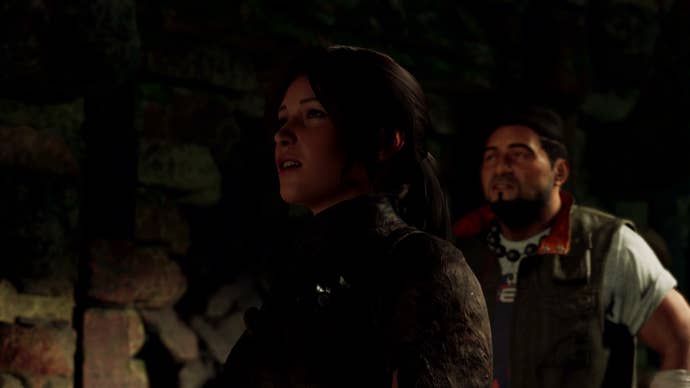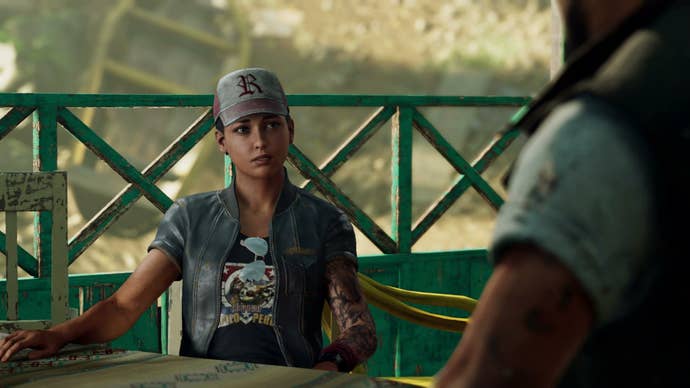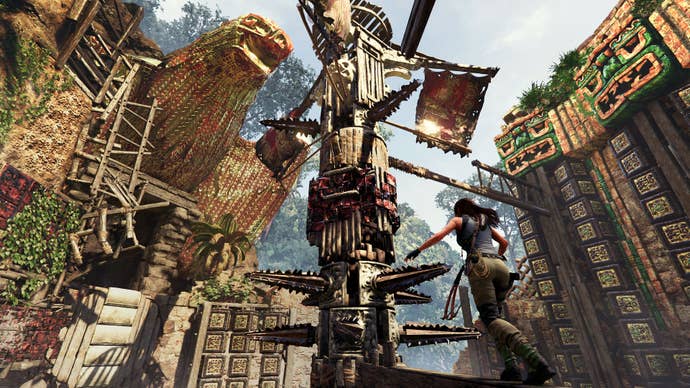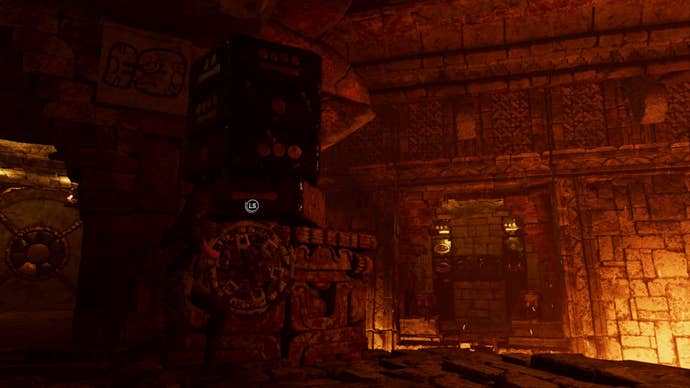Shadow of the Tomb Raider Highlights Lara's Moral Struggles, but Tombs and Puzzles Reign Supreme
Lara Croft is not herself, but she isn't completely gone either.
This article first appeared on USgamer, a partner publication of VG247. Some content, such as this article, has been migrated to VG247 for posterity after USgamer's closure - but it has not been edited or further vetted by the VG247 team.
Shadow of the Tomb Raider is supposed to be the story of when Lara Croft finally becomes the Tomb Raider she was always meant to be. The truth is becoming the Tomb Raider was also becoming a bit of a sociopath. Watching this Lara over the course of three games, being the Tomb Raider feels like a bit of a loss of who she was.

This version of Lara Croft is driven, nearly to a fault. In the early moments of my playable demo, she's taking pictures of a ruin right up until constant companion Jonah pulls her to safety. Her primary drive to stop evil organization Trinity creates a tsunami that destroys a village; both Jonah and the supposed antagonist catisgate Lara for her choices. As the person in the driver's seat, I can't really argue with their thesis. Lara Croft is action without thought, drive without purpose, violence without focus.
She's a bit broken. And perhaps that's what being the Tomb Raider truly means. The original Lara Croft didn't really care about tombs, dinosaurs, or the undead trying to prevent her from plundering their resting place. It was a different kind of storytelling from a different era and the truth is Lara now has little to do with Lara then.
Shadow of the Tomb Raider jumps back to the composition of the first reboot title, with paths winding and twisting over each other in a jungle habitat. There are large open-world hub areas like Rise of the Tomb Raider's Siberian Wilderness, but Eidos Montreal has moved in a new direction. Instead of a lifeless open-world focused on survival, Shadow of the Tomb Raider's open areas are cities, full of native life and unique quests to undertake. While Rise of the Tomb Raider was Lara versus the lonely wilderness, Shadow places her against the jungle to help others.

These natives aren't just faceless folks. In the first settlement, Lara and Jonah run into Abby, the cool, confident lady who looks to be the first person to really catch Jonah's eye. There's a foreman who needs Lara to help save his son from a life of servitude. And there's the descendants of the ancient city of Patiti, who are still carving out their own lives in the jungles of Peru.
In the modern day, Lara has to deal with the consequences of her actions. She has to tackle the loss of life and the ultimate effect her dogged revenge has had on her relationships. Shadow of the Tomb Raider is trying to tell a different story; one about a Lara Croft that might be somehwat responsible. With great power comes great responsibility, but that responsibility also comes with the ability and drive to survive centuries-old death traps.

The death traps are really the focus of this next stage of Lara Croft's life though. For all of the narrative focus of Shadow of the Tomb Raider, the true aim is raiding tombs. Players have asked for more tombs since Tomb Raider's reboot in 2013 and Eidos Montreal is poised to deliver. So many tombs.
From the very beginning of the jungle, there are small tombs and crypts that task Lara with completing tiny puzzles to succeed. The first tomb just has you avoiding traps hidden in a falling floor, the second asks you to traverse a dangerous height, and the next wants you to move large weights with the power of the winds. Some are based on weight and momentum, while others just need you to make your way to the right switch. One just requires you to complete your due diligence in reading the room.
Not only are there smaller challenge tombs like previous games, there are also larger death traps that remind me of the old rooms of Ubisoft's Prince of Persia or Assassin's Creed II's Assassin Tombs. At the end of my playtime, there was the the Trial of the Eagle, an immense structure that is equal parts timing and tactics to conqueror. Shadow of the Tomb Raider wants to remind you what Lara's original calling is, and given that not many games offer the same type of experience, a focus on tombs is a welcome change for the franchise.

I liked Tomb Raider's reboot and Rise of the Tomb Raider; they're pretty solid games. But I also miss the puzzle and traversal-oriented action of the previous generation of games. Given the enhanced fidelity, many AAA titles have left behind this action puzzle motif, so it's great to see Shadow of the Tomb Raider pick up the torch and light the whole goddamn room on fire.
Lara herself has also improved for the better. She can still stealth kill with the best of them, but her instinct mode now shows her which targets are visible to their comrades and thus not ready for a sweet kill. (Oddly enough, I saw a similar feature in Spider-Man for PlayStation 4, so developers are coming up with the similar ideas at the same time.) Lara can hide in vines hanging off walls or up in trees; she's more mobile all around. She can also cover herself in mud to improve her stealth capabilities in the jungle.

She's gained the ability to rappel off the porous walls that she can Spider-Man onto with her dual climbing axes. Finally, Lara has the ability to throw an axe out like a grappling hook, letting her latch onto points previously out of her reach. All of these moves are in service of the tombs and crypts; by offering more ways to move around the level, Eidos Montreal also gives players more ways to solve tomb puzzles.
There's a narrative layer to Lara's latest journey and I don't want to minimize that, but for players of previous Tomb Raider titles, the emphasis on exploration and tombs is the real hook. Surviving the environment because you've killed all the things that could stop you is one thing—Lara literally fights a jaguar for her survival—but winning because you've actually figured out the way forward or executed on that plan is another. Shadow of the Tomb Raider looks to stand with the latter concepts.

These first few hours of Shadow of the Tomb Raider have been an eye-opener. While the game feels wholly familiar at points—the basics of combat and flinging yourself at a wall to slam your climbing axe home—there's a new verve and swagger to what Eidos Montreal has created here. It's as if Lara becoming the Tomb Raider was also a marker for the game to evolve. I'm really digging the shape of what it has become.
Shadow of the Tomb Raider is coming to PlayStation 4, Xbox One, and PC on September 14, 2018.

















